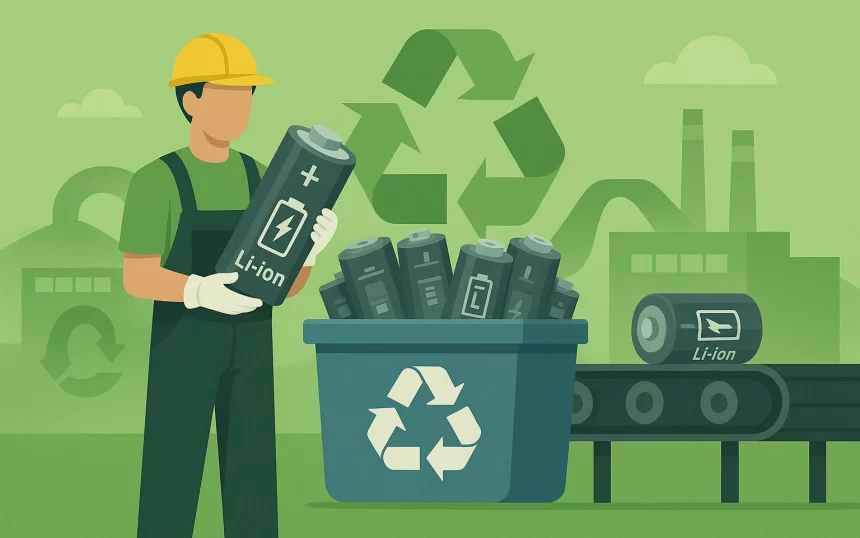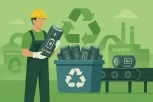Simple Step for Battery Recycling

Batteries power our lives — from remote controls and smartphones to electric cars and laptops. But once they’re used up, batteries become hazardous waste if not handled properly. Improper disposal can leak toxic chemicals into the soil and water, harming the environment and human health. Fortunately, battery recycling is easier than you might think. Here’s a simple guide to help you do your part for a cleaner, greener planet.
Why Battery Recycling Matters
Batteries contain valuable metals like lithium, cobalt, nickel, and lead that can be reused. Recycling helps:
- Reduce pollution from heavy metals and corrosive acids
Conserve resources by recovering reusable materials
Cut energy use compared to mining and refining raw metals
Prevent fires in landfills and garbage trucks caused by battery sparks
Process
1. Identify the Battery Types
Different types of batteries require different recycling methods:
Alkaline (AA, AAA, etc.): Often safe for household trash in small quantities, but recycling is better.
Lithium-ion (phones, laptops, e-bikes): Must be recycled.
Lead-acid (car batteries): Extremely toxic; always recycle.
Rechargeables (NiMH, NiCd): Must be recycled.
Button cells (watches, hearing aids): Contain mercury or silver—must be handled carefully.
Check the label if you’re unsure about the battery type.
2. Store Used Batteries Safely
Until you’re ready to recycle, store batteries in a dry, cool place in a non-metal container (like a cardboard box or plastic tub). Tape the terminals of lithium or 9V batteries to prevent sparking or short circuits.
3. Locate a Recycling Center
Battery recycling programs are widely available:
Retail drop-off: Many stores (like Best Buy, Staples, Home Depot) have battery collection bins.
Municipal hazardous waste centers: Your city may host collection events or have permanent drop-off sites.
Mail-in programs: Some companies offer prepaid battery recycling kits.
Check Call2Recycle.org (U.S. and Canada) or your local government’s website for nearby options.
4. Dispose Responsibly
Once you’ve collected your batteries:
Bag or tape them as required (especially lithium and rechargeable types)
Drop them off at designated points
Never toss batteries in household trash or curbside recycling—they can cause fires and contaminate waste streams
5. Choose Reusables and Recycle Again
Make recycling a habit. Better yet, reduce your battery waste by switching to:
Rechargeable batteries
Solar-powered devices
Energy-efficient gadgets
And don’t forget to recycle those reusables when they reach end-of-life.
Final Thoughts
Battery recycling is a small step with a big impact. By making it part of your routine, you’re protecting the environment, conserving resources, and helping build a more sustainable future. Let’s keep toxic waste out of landfills and valuable metals in circulation — one battery at a time.


